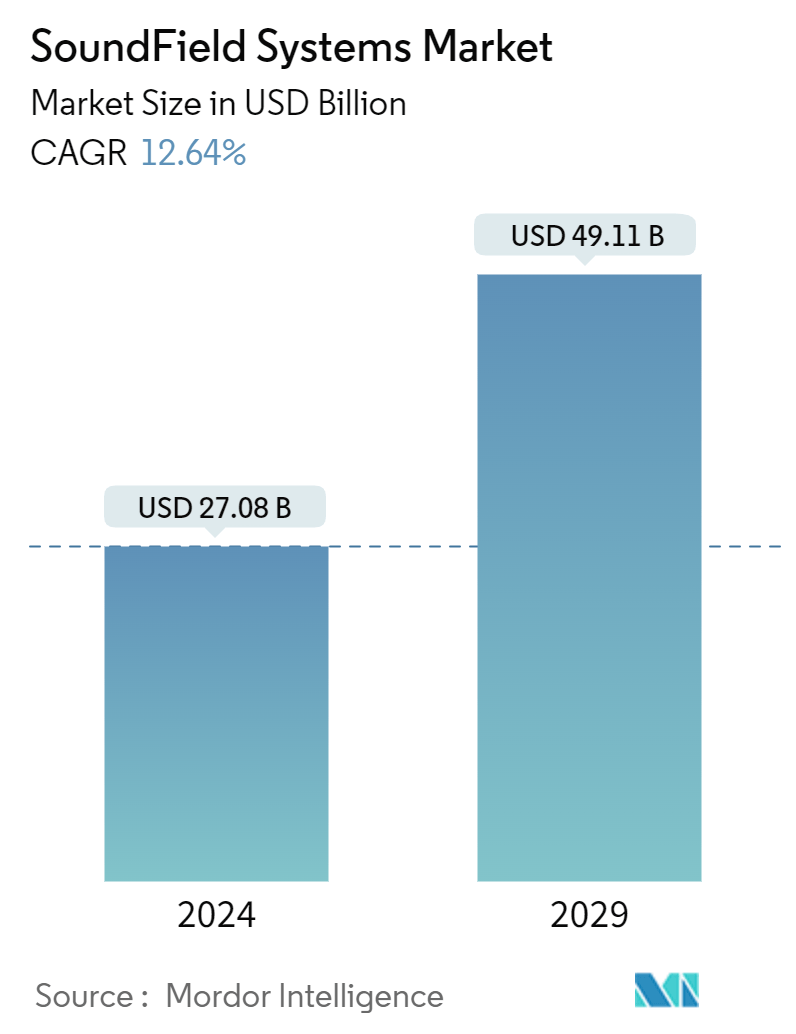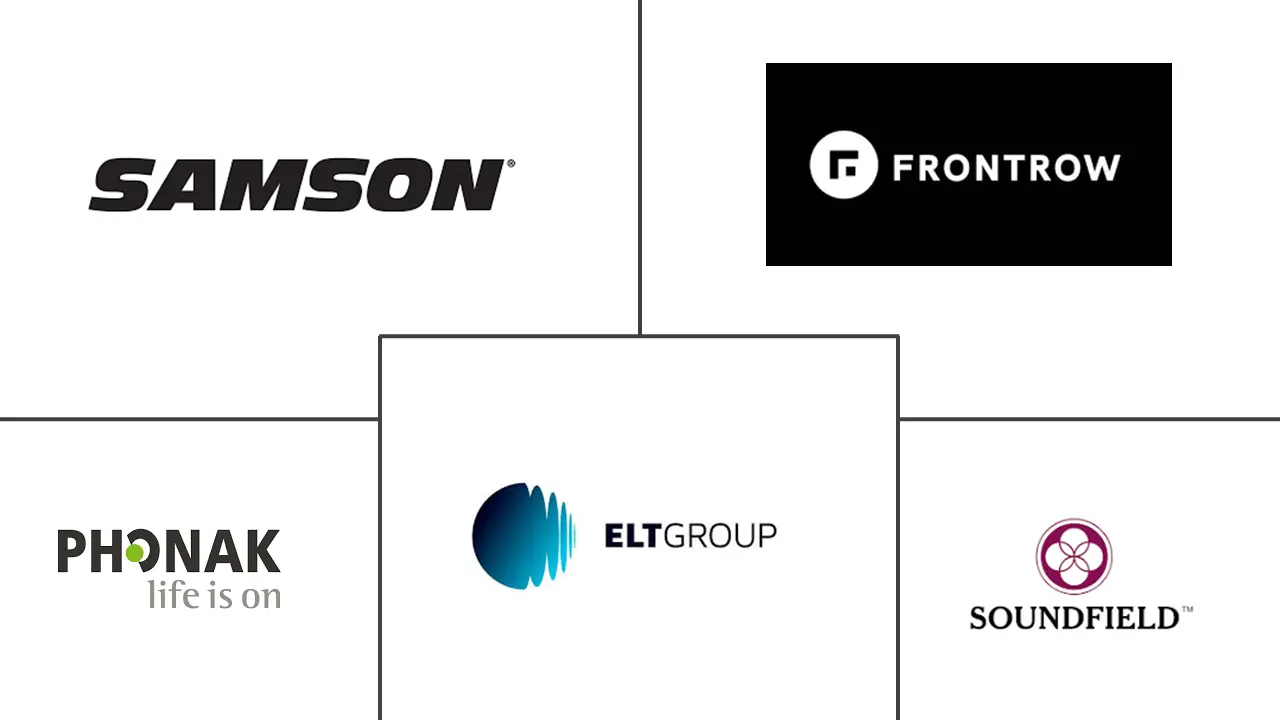Market Size of SoundField Systems Industry

| Study Period | 2019 - 2029 |
| Market Size (2024) | USD 27.08 Billion |
| Market Size (2029) | USD 49.11 Billion |
| CAGR (2024 - 2029) | 12.64 % |
| Fastest Growing Market | North America |
| Largest Market | Asia Pacific |
Major Players
*Disclaimer: Major Players sorted in no particular order |
SoundField Systems Market Analysis
The SoundField Systems Market size is estimated at USD 27.08 billion in 2024, and is expected to reach USD 49.11 billion by 2029, growing at a CAGR of 12.64% during the forecast period (2024-2029).
- The SoundField system comprises a microphone and a speaker. The wireless microphone can be worn on a lanyard or used with a lapel headset. These microphones are lightweight and easy to maneuver. When the speaker addresses the microphone, their voice is amplified through the speaker, enabling listeners to concentrate on the presentation rather than background chatter.
- SoundField systems enhance the learning environment for all children in classrooms by reducing ambient noise and delivering clearer audio from speakers. These systems also alleviate vocal strain for teachers. Given these advantages, soundfield systems should be standard in every classroom and educational space, further driving market growth.
- Hearing-impaired children, along with those diagnosed with Auditory Processing Disorder (APD), stand to gain significantly from utilising a soundfield system. Such systems ensure that these children can hear their teacher's voice distinctly, no matter their seat in the classroom. A soundfield system comprises a wireless microphone worn by the teacher, which transmits the teacher's voice directly to strategically placed speakers. Consequently, even if a teacher turns away from the class, students with hearing challenges or attention difficulties can still catch every word clearly.
- Furthermore, the demand for soundfield systems is increasing as it increases attention to verbal instruction and improved comprehension, improves sentence recognition, reduces voice strain and fatigue, and increase language growth, thus driving the market growth.
- The integration of soundfield is increasingly prevalent, as it is now included in the specifications for new schools and refurbished classrooms by Local Education Authorities (LEAs) across the globe. Furthermore, there is a growing demand from educators in both mainstream and inclusive teaching settings, particularly where students with hearing impairments are being incorporated into standard educational frameworks.
- Furthermore, SoundField systems come with high initial investment costs. Moreover, to thrive in this ever-evolving industry, brands must navigate challenges including audio quality, battery life, privacy concerns, competitiveness, interoperability, and safety, which are important to maintain a competitive edge and ensuring customer satisfaction.
- Macroeconomic factors, such as fluctuations in exchange rates and shifts in international trade dynamics, could sway the global soundfield systems market. Changes in currency values might influence the costs of imported microphones, speakers, and raw materials, subsequently impacting the pricing strategies and profitability of equipment manufacturers.

